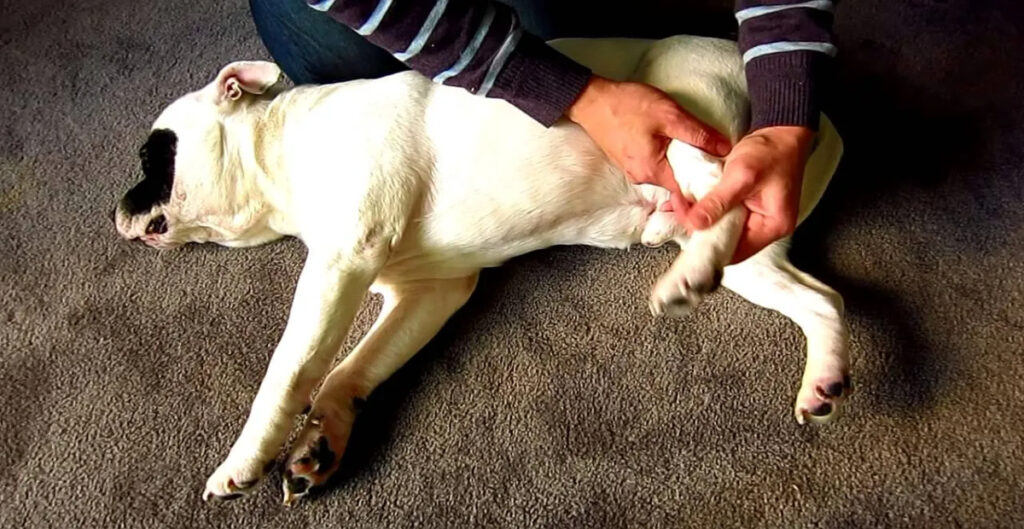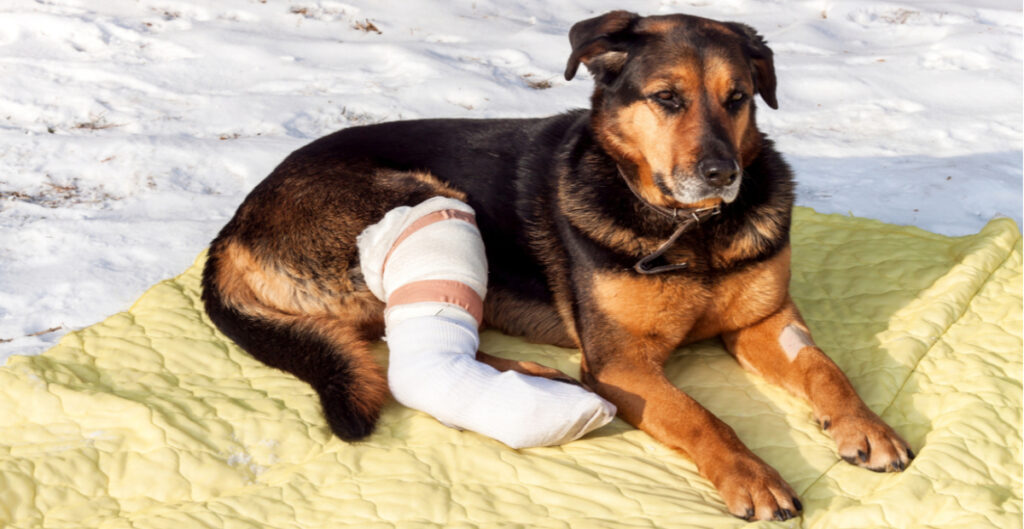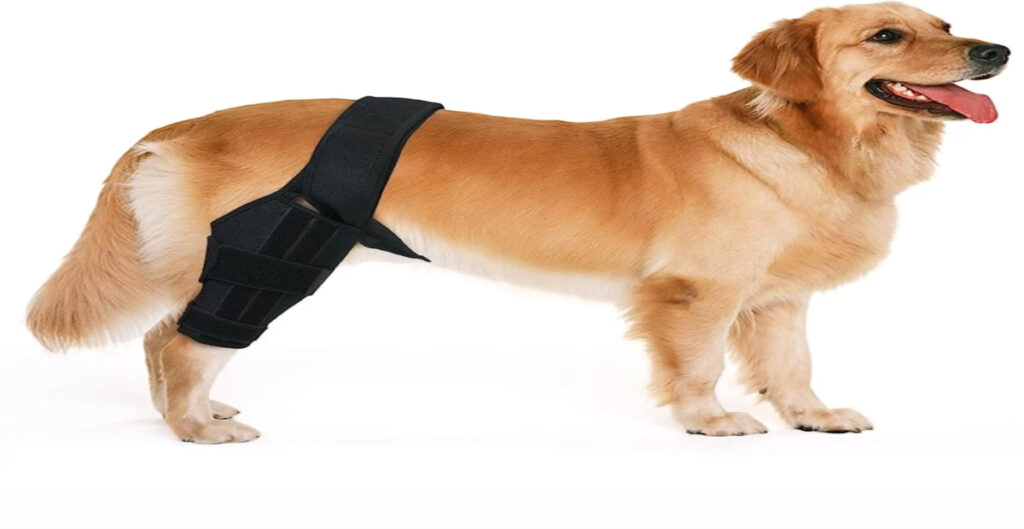
The rough terrain and hot summers of Greece can take a toll on the joints of local dogs over time. But even young, active pets can develop a sudden onset of severe lameness that affects their limbs. Known as acute lameness, this signals injury or inflammation of tendons, ligaments or joints. It can occur after physical trauma or due to an underlying disease. Acute lameness requires immediate veterinary attention to determine the cause and appropriate treatment. This article investigates the origin, diagnosis and management of cases of acute lameness in dogs in Greece.
Causes of Acute Hind Limb Claudication

Cranial Cruciate Ligament Tears
This is a common knee injury in dogs, caused by a partial or complete tear of a ligament that stabilizes the knee joint. Any dog can be affected, but large breeds are particularly susceptible. Lameness ranges from mild to inability to bear weight. Surgery is usually required to stabilize the joint.
Patella Luxation
This refers to a dislocation of the patella. Dislocation of the medial patella causes lameness in the hind limb as the patella slips out of its groove. Small and toy dogs are more susceptible. Mild cases may resolve with rest, but surgery is sometimes required for recurrent dislocations.
Hip dysplasia
Signs include lameness and difficulty rising. A shallow hip socket allows for excessive wear on the joint over time. Large breeds like the German Shepherd are genetically predisposed, but it can affect any dog. Weight management, medication, therapy, and sometimes surgery help manage pain.
Causes of acute foreleg lameness

Osteochondritis Dissecans
This painful condition results from cartilage flaps within the joints. Lameness is seen as the affected joints swell and stiffen. Rest, medication, and surgery are treatment options. Young large breed dogs are most at risk.
Fractures
Broken bones from trauma will lead to acute lameness. Fractures require immediate immobilization and veterinary care to align the bones for proper healing. Strict rest is required during recovery.
Panosteitis
Also called wandering or transient claudication, this condition causes lameness of the legs with displacement as the inflammation subsides and diminishes in the long bones during growth. It usually resolves on its own by the age of 18 months. Common in large breeds such as German Shepherds.
Less common causes
While the above represent the most common causes, other conditions such as Lyme disease, bone cancer, immune disorders and neurological problems can also sometimes manifest as acute lameness. A thorough diagnostic test helps rule out these less common culprits.
Diagnosis of the cause of acute lameness

Vets use a combination of tools to identify the source of lameness:
Physical Examination
Checking the range of motion, swelling, and pain response helps pinpoint the problem. Specific joint tests may indicate ligament tears and instability.
Radiographs
X-rays allow visual confirmation of bone problems such as hip dysplasia, fractures, bone cancer and joint wear and tear.
Advanced Imaging
MRI and CT scans provide detailed assessment of soft tissue structures such as ligaments and cartilage.
Blood collection
Inflammatory markers may be elevated with immunoarthritis. Exclusion of systemic disease is also important.
Common Fluid Analysis
Examining the fluid removed from the affected joint can detect inflammatory cells and rule out infection.
Treatment options for acute claudication

Rest of
Limiting activity prevents further injury and allows inflammation to subside. Confine dogs in small areas to limit movement.
Psychotherapy
Intermittent application of ice packs helps minimize swelling and pain. Be careful to avoid frostbite.
Pain medicine
Nonsteroidal anti-inflammatory drugs such as Rimadyl provide relief from lameness.
Joint injections
Corticosteroids or viscose supplementation directly into the joint reduces inflammation.
Rehab Therapy
Strength training, massage, and modalities such as laser therapy aid recovery.
Surgery
Procedures such as cranial cruciate ligament repair and joint replacement can address underlying structural problems.
Vets will tailor the treatment plan to the specific injury or condition causing the lameness. Strict rest is always recommended while the inflammation subsides.
Home Care and Monitoring

Owners play a key role in managing dogs with acute lameness at home:
- Administer all medications as prescribed
- Prevent your dog from running, jumping or running
- Help dogs up/down stairs and restrict access if necessary
- Apply hot or cold compresses to the affected extremities
- Gently massage the feet, but avoid manipulating painful joints
- Use a sling or towel under the abdomen to aid mobility
- Record loading and lameness daily to track improvement
- Keep your dog calm and comfortable in recovery
- Attend all subsequent appointments for re-evaluation
- Strict adherence to veterinary instructions facilitates optimal healing. Notify your veterinarian if lameness persists beyond expectations.
Results and Prognosis

The prognosis depends on the cause and severity of the acute claudication. Mild sprains may resolve completely within 2 weeks. Chronic conditions such as hip dysplasia require lifelong treatment. For injuries requiring surgery, such as transverse cranial lacerations, the prognosis is good with strict rehabilitation and rest postoperatively. However, affected joints have an increased risk of developing arthritis later in life. With acute onset lameness, seek early veterinary evaluation to determine the appropriate treatment for the best outcome.
conclusion
Dog owners in Greece should monitor their active pets for any sudden lameness or lameness, which signals an injury or joint disease that needs veterinary attention. While the rugged terrain predisposes local dogs to progressive joint problems, acute lameness can also strike active pets out of the blue. Diagnostic tests determine the exact source so that appropriate treatment can be applied. Limiting activity and following rehabilitation protocols facilitate healing. With careful observation by owners combined with individualized veterinary care, most dogs return to normal function after an acute episode of lameness.
FAQS
Common causes of acute hind leg lameness include cranial cruciate ligament tears, patellar dislocation, hip dysplasia, spinal problems, and traumatic injuries such as fractures.
Veterinarians use X-rays, MRIs, CT scans, joint fluid analysis, blood work, and thorough physical examinations to identify the source of acute front leg lameness. This helps guide treatment.
Limit activity, apply cold compresses to minimize swelling, assist with mobility using slings/towels, and give pain medication if prescribed. Avoid handling the painful joint and schedule an immediate veterinary visit.
After the initial inflammation and pain are controlled, surgery is usually followed to stabilize the knee joint by replacing or reinforcing the torn cranial cruciate ligament. Strict rest and rehabilitation follow recovery.
Recovery time depends on the diagnosis – sprains can take 1-2 weeks to heal. Fractures require 4-8 weeks in a cast. Cruciate surgery recovery can take 6-8 weeks. Follow all recovery instructions to ensure proper healing.
